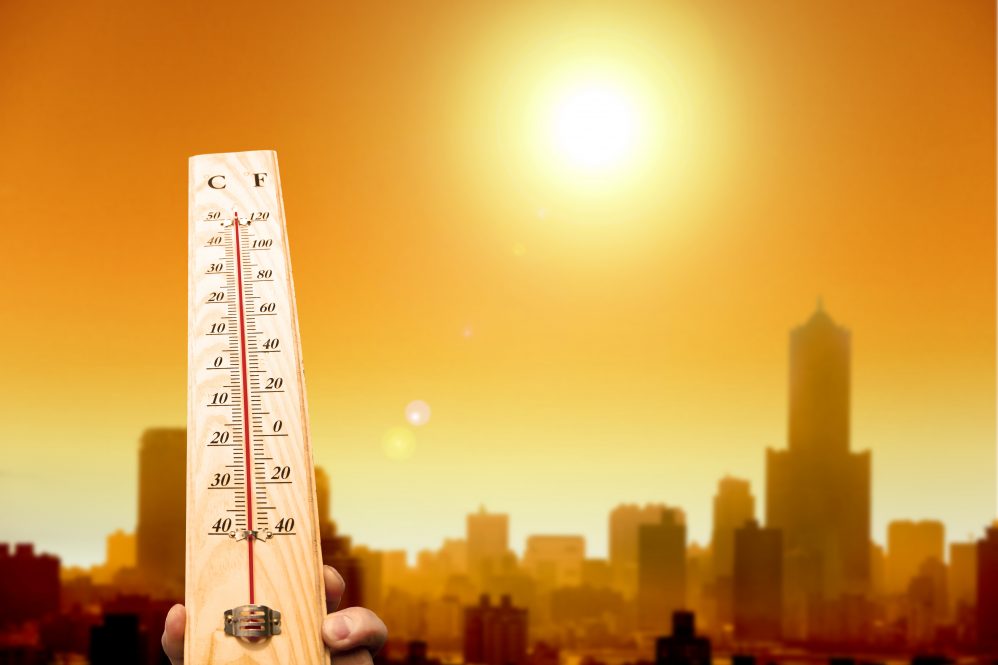Climate change is increasing the incidence of extreme heat everywhere. In places like Connecticut where residents are less acclimated to this kind of heat, it is an even more significant public health risk.
Mariana Fragomeni, assistant professor of landscape architecture in the College of Agriculture, Health, and Natural Resources, presented her research on how surface temperatures in Fairfield and New Haven counties have changed over the past 20 years and how different kinds of land cover affect heat in a Connecticut Institute for Resilience & Climate Adaptation (CIRCA) webinar Monday.
As part of the Resilient Connecticut project, Fragomeni and her team, which included Tracey Miller and undergraduate student Katherine Day, used surface temperature data from Landsat satellite imagery and land cover data from the National Land Cover database (NLCD) to observe how land cover and surface temperature have changed over time. Landsat is a NASA program that provides free access to satellite images of earth’s surface, archived back to the 1970s, with surface temperature data since the 1980s. NLCD is a USGS database updated every five years since 1999.
Fragomeni’s team combined this information with heat and humidity sensor data, deployed by Yaprak Onat at CIRCA, and examined the sensation of heat using the heat index.
The first part of the study looked at the past five years to understand what the land in these counties looks like right now. Fragomeni characterized areas based on local climate zone (LCZ) profiles. These classifications provide much more detail than simply identifying if an area is rural or urban. They take characteristics such as building height, materials, compactness, and vegetation into account.
Fragomeni found an increase in urbanization, specifically mid and low-rise buildings, in some areas such as around Waterbury, Torrington, and Bridgeport.
Fragomeni then looked at longer-term changes using data about land surface temperature and land coverage going back to 1999.
The major changes have been a loss of pasture and forest land and an increase in urban development.
“Not all urbanization is alike,” Fragomeni says. “But the one we’ve gained the most is the high-intense one, meaning the denser type of development.”
Fragomeni found that some hot spots or “heat islands” in urban areas have experienced a five-to-10-degree Fahrenheit surface temperature increase over the past 20 years.
Fragomeni used temperature and humidity measurements to assess the heat index, a measure of how people feel in hot weather, using sensors placed in different types of landscapes across the city of New Haven.
Fragomeni found that areas with dense forests are cooler, while tightly packed urban areas were significantly hotter. The two key factors influencing this difference were ventilation and shade. Air flows more freely through trees than buildings and the trees provide shade. The ground surface temperature is also generally cooler in areas with a lot of vegetation.
“This is an important factor we need to think through as we think about our environment,” Fragomeni says. “It’s not about any vegetation. Even if we’re increasing grass or shrubs, they’re not adding the shade we need to reduce that temperature.”
Fragomeni’s study used readily available data and machine learning methods, making it easy to apply this work to other contexts.
“This is a replicable methodology for our communities in the future to help us understand what’s going on and keep going in the future and analyzing other areas,” Fragomeni says.
The findings from this study can help communities plan more intelligently to make themselves more adaptable and resilient in the face of increasing temperatures. CIRCA’s sensors are still collecting temperature and humidity data which she hopes to use to continue this research.
“We need to do more, we need to measure more, but there’s definitely a lot already here for us to help our communities plan for heat,” Fragomeni says.
The CIRCA “brown bag” Resilient Connecticut webinar series presents talks by experts studying various aspects of how climate change is impacted Connecticut.
Follow UConn CAHNR on social media.



